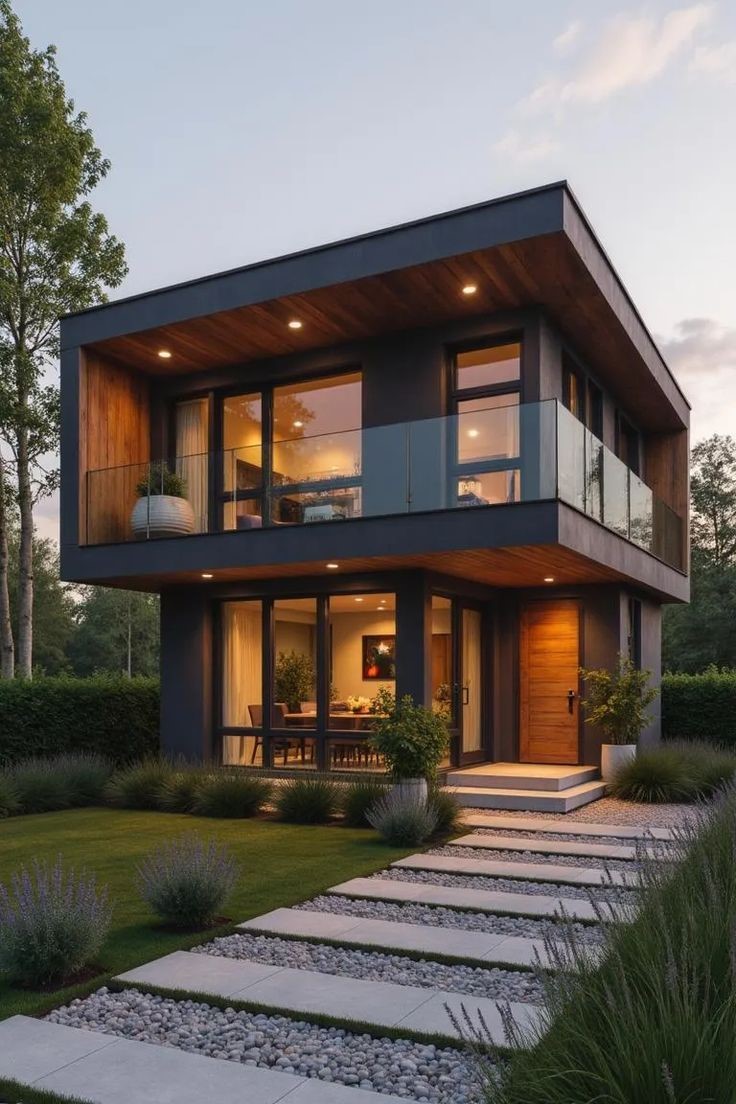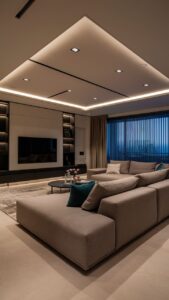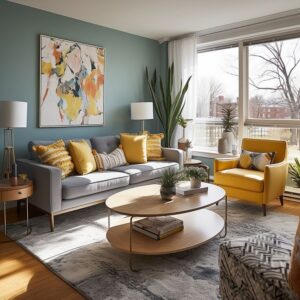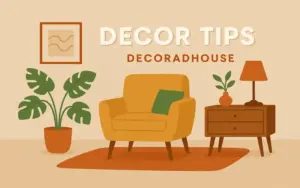
The concept of a modern house has transformed dramatically over the past century, reflecting shifts in technology, lifestyle, and architectural philosophy. Today, a modern house is more than just a place to live—it’s a statement of individuality, sustainability, and innovation. From sleek minimalist designs to eco-friendly structures that blend seamlessly with nature, the modern house embodies the spirit of contemporary living. This article explores the defining features, historical influences, and future potential of the modern house, delving into why it continues to captivate homeowners and architects alike.
Origins of the Modern House
The roots of the modern house can be traced back to the early 20th century, when architects like Frank Lloyd Wright and Le Corbusier began challenging traditional notions of residential design. Rejecting the ornate, cluttered aesthetics of Victorian homes, they embraced simplicity, functionality, and a connection to the outdoors. Wright’s Prairie-style homes, with their low profiles and expansive windows, laid the groundwork for what we now recognize as the modern house. Meanwhile, Le Corbusier’s “machines for living” introduced the idea that a modern house should prioritize efficiency and utility, a philosophy that still resonates today.
The Industrial Revolution played a pivotal role in shaping the modern house. New materials like steel, glass, and concrete allowed architects to experiment with open floor plans and bold geometric forms. These innovations gave rise to the modern house as a symbol of progress, breaking free from the constraints of the past. By the mid-20th century, the modern house had become synonymous with the International Style, characterized by clean lines, minimal ornamentation, and an emphasis on form following function.
Key Features of the Modern House
What sets the modern house apart from its predecessors? At its core, the modern house is defined by simplicity and intentionality. Open-plan layouts are a hallmark, creating fluid spaces that encourage social interaction and flexibility. Large windows and glass walls flood interiors with natural light, blurring the boundaries between inside and out. This connection to nature is a fundamental aspect of the modern house, reflecting a desire to harmonize with the environment rather than dominate it.
Materials also play a crucial role in the modern house. Exposed concrete, polished wood, and brushed metal are common choices, often left in their raw state to highlight their natural beauty. Furniture in a modern house tends to be sleek and understated, with an emphasis on quality over quantity. The mantra “less is more” guides every design decision, ensuring that the modern house remains uncluttered and serene.
Technology is another cornerstone of the modern house. Smart home systems, energy-efficient appliances, and sustainable building techniques are increasingly integrated into the modern house, making it as practical as it is stylish. Solar panels, rainwater harvesting, and advanced insulation are just a few examples of how the modern house adapts to the demands of the 21st century.
The Appeal of the Modern House
Why does the modern house hold such enduring appeal? For many, it’s the promise of a lifestyle unencumbered by excess. In a world of constant noise and distraction, the modern house offers a sanctuary of calm and clarity. Its minimalist aesthetic encourages mindfulness, urging occupants to focus on what truly matters. The modern house isn’t just a structure—it’s a way of living.
The versatility of the modern house also contributes to its popularity. Whether it’s a compact urban loft or a sprawling countryside retreat, the principles of modern design can be adapted to any setting. This flexibility ensures that the modern house remains relevant across cultures and climates, from the bustling streets of Tokyo to the rolling hills of Tuscany.
Moreover, the modern house appeals to a growing awareness of environmental responsibility. As climate change becomes an urgent global issue, homeowners are drawn to the modern house for its eco-friendly potential. Green roofs, passive heating, and recycled materials are just a few ways the modern house minimizes its ecological footprint, aligning with the values of a sustainability-conscious generation.
The Modern House in Urban Settings
In cities, the modern house takes on new forms to accommodate limited space and dense populations. High-rise apartments and townhouses often embody modern design principles, with vertical gardens and rooftop terraces bringing nature into the urban jungle. The modern house in these contexts maximizes efficiency, using modular furniture and multifunctional spaces to make the most of every square foot.
Urban dwellers are particularly drawn to the modern house for its ability to balance aesthetics with practicality. A modern house in the city might feature a minimalist kitchen that doubles as a workspace, or a living area that seamlessly transitions into an outdoor balcony. This adaptability makes the modern house a perfect fit for fast-paced, dynamic lifestyles.
The Modern House and Sustainability
Sustainability is at the heart of the modern house in the 21st century. Architects and builders are increasingly focused on creating homes that reduce energy consumption and waste. The modern house often incorporates passive design strategies, such as strategic window placement to optimize natural ventilation and lighting. These features not only lower utility bills but also enhance the comfort of the modern house year-round.
The use of renewable energy sources is another defining trait of the modern house. Solar panels, wind turbines, and geothermal heating systems are becoming standard in many modern homes, reflecting a shift toward self-sufficiency. The modern house isn’t just a product of its time—it’s a blueprint for the future, demonstrating how architecture can address pressing environmental challenges.
Cultural Influences on the Modern House
While the modern house is often associated with Western design movements, its evolution has been shaped by diverse cultural influences. In Japan, for example, the modern house draws inspiration from traditional concepts like wabi-sabi, which celebrates imperfection and simplicity. Scandinavian modern homes emphasize coziness and functionality, blending sleek design with warm textures to create a modern house that feels both stylish and inviting.
In tropical regions, the modern house adapts to local climates with features like elevated foundations, wide eaves, and natural ventilation systems. These variations highlight the modern house’s ability to transcend borders, offering a universal framework that can be tailored to specific needs and traditions.
The Future of the Modern House
As we look ahead, the modern house is poised to evolve even further. Advances in technology, such as 3D printing and modular construction, promise to make the modern house more accessible and affordable. Imagine a modern house built in days rather than months, customized to the owner’s exact specifications—this is the direction the industry is heading.
The modern house will also continue to prioritize sustainability, with innovations like carbon-neutral materials and AI-driven energy management systems. Urbanization will drive the development of micro-modern homes, compact yet fully functional spaces that redefine what a modern house can be. At the same time, rural areas may see a resurgence of off-grid modern homes, as people seek to escape the chaos of city life.
Challenges Facing the Modern House
Despite its many strengths, the modern house isn’t without challenges. The emphasis on minimalism can sometimes feel cold or impersonal, leading some to critique the modern house as lacking character. Striking a balance between simplicity and warmth remains an ongoing task for designers.
Cost is another hurdle. While the modern house aims to be efficient, high-quality materials and cutting-edge technology can make it expensive to build. This has led to a perception that the modern house is a luxury reserved for the affluent, though efforts are underway to democratize modern design through affordable housing initiatives.
Conclusion
The modern house is a testament to human ingenuity and adaptability. From its humble beginnings in the early 20th century to its current status as a cultural icon, the modern house has continually reinvented itself to meet the needs of each generation. Whether it’s through sustainable innovation, minimalist elegance, or technological integration, the modern house offers a vision of living that is both timeless and forward-thinking.
As we move deeper into the 21st century, the modern house will undoubtedly face new challenges and opportunities. Yet its core principles—simplicity, functionality, and harmony—ensure that it will remain a beloved archetype for years to come. The modern house isn’t just a trend; it’s a movement, one that invites us to rethink how we live, work, and connect with the world around us. In every corner of the globe, the modern house stands as a symbol of what’s possible when creativity meets purpose.





